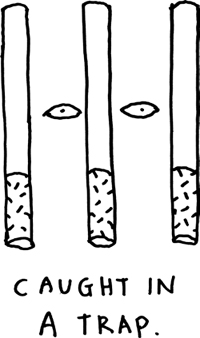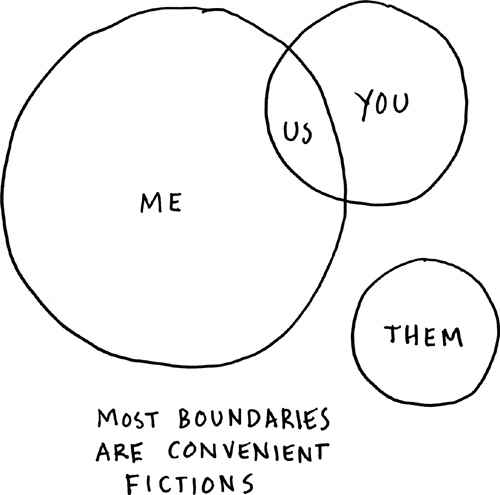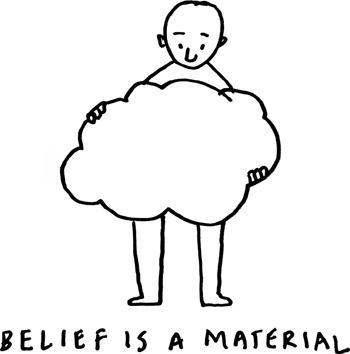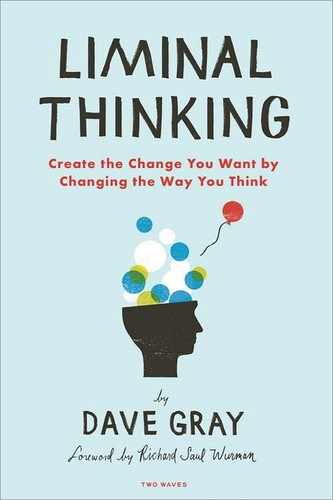Introduction
What Is Liminal Thinking?
Once you see the boundaries of your environment, they are no longer the boundaries of your environment.
—Marshall McLuhan

Have you ever had a moment that changed your life forever?
When I was 29 years old, I desperately wanted to quit smoking, but I didn’t believe I could do it. I felt like I was caught in a trap. I didn’t want to smoke anymore, but I didn’t think I could quit. I had tried before and failed.
Then one day, I was sick with a chest cold. I was so addicted that even though I was sick and coughing, I didn’t stop smoking, not even for a day. As I sat there, in my bathrobe, coughing and smoking, I pictured myself as an old man, wheezing, unable to catch my breath, and feeling that way all the time, not just when I was sick.
That day, impulsively, I quit. It wasn’t easy, but to my own surprise, I stuck with it and haven’t had a cigarette for more than 20 years.
That in itself was a huge change. But it was accompanied by a deeper change. I realized that if I could quit smoking—something I had thought was impossible—then I was capable of a lot more. The confidence and courage I gained by quitting smoking led me to change my life in far more profound ways. Within the next few months, I ended my relationship with my girlfriend, quit my job, changed industries, moved across the country, and started my own business.
My whole perspective had changed. And that shift in perspective changed my life.

Have you had moments like this in your life, when you suddenly saw things in a new and different way?
A new way of seeing the world—and yourself—opens the door to change and growth.
You can cultivate a way of thinking and being that will allow you to have these breakthrough insights more often. Through that new way of thinking, you will be able to guide others to similar mind shifts that will give them the power to transform their lives. This way of thinking is a practice you can use to find and create new doorways to possibilities, doorways that are invisible to others.
I call this practice liminal thinking.
The word liminal comes from the Latin root limen, which means threshold.

A threshold is a border, a boundary, or an edge. It is a marginal, in-between space that defines two things, while at the same time being neither one nor the other.
Most boundaries are convenient fictions. What divides the people who are “on” a team from those who are not? What separates one company department or division from another, or an employee from a customer? Boundaries give life structure, which makes us comfortable. But they can also be shifted, rethought, reframed, and reorganized.

Change happens at the boundaries of things: the boundary between the known and the unknown, the familiar and the different, between the old way and the new way, the past and the future.
Some roles are liminal in nature. A coach, for example, is part of the team and not part of the team at the same time. A consultant works in a company, without being part of the company. A therapist has access to the deepest emotions of family life, while not being part of the family. A teacher is part of the class and not part of the class.
These are liminal roles because they are associated with growth and change, which involve breaking, shifting, or otherwise transcending boundaries
You have liminal moments every day, when you are just waking up and when you are just falling asleep. You usually don’t notice these liminal moments, but they are valuable sources of creativity and insight. Ever have a good idea in the shower or in the middle of the night? That happened because your mind was relaxed and open to possibilities.1
The idea behind liminal thinking is that there are thresholds, doors of opportunity, around you, all the time. Most of them are invisible to you, because you are focusing on other things. But they are there, they are real, and they offer incredible potential for growth and change. Tuning your mind to liminal thinking will help you see opportunities that others will be unable to see or even imagine. It’s a kind of psychological agility that enables you to create change where others cannot.
You don’t need any formal authority, budget, or official sanction to be successful at liminal thinking. All that’s required is one person with a desire to create change.
Liminal thinking, like any other craft, requires a deep understanding of its materials.
If you are a carpenter, you must understand your tools, the theories behind them, and how to use them. Whether you are a doctor, a mechanic, a lawyer, or a gardener, the same rule applies.
No matter what you do, the better and more deeply you can understand your materials, the more possibilities you will be able to create.
In liminal thinking, the most important material to understand is belief.

Liminal thinking is the art of creating change by understanding, shaping, and reframing beliefs.
